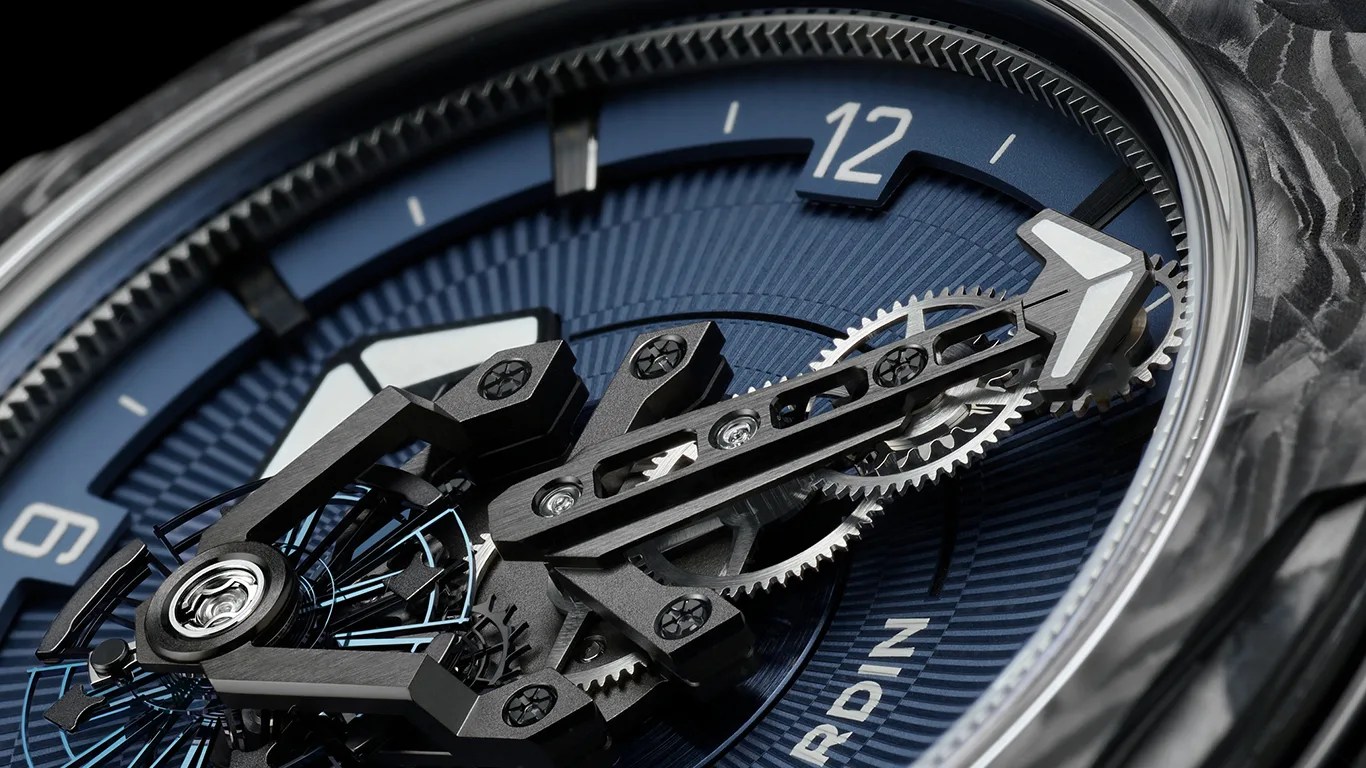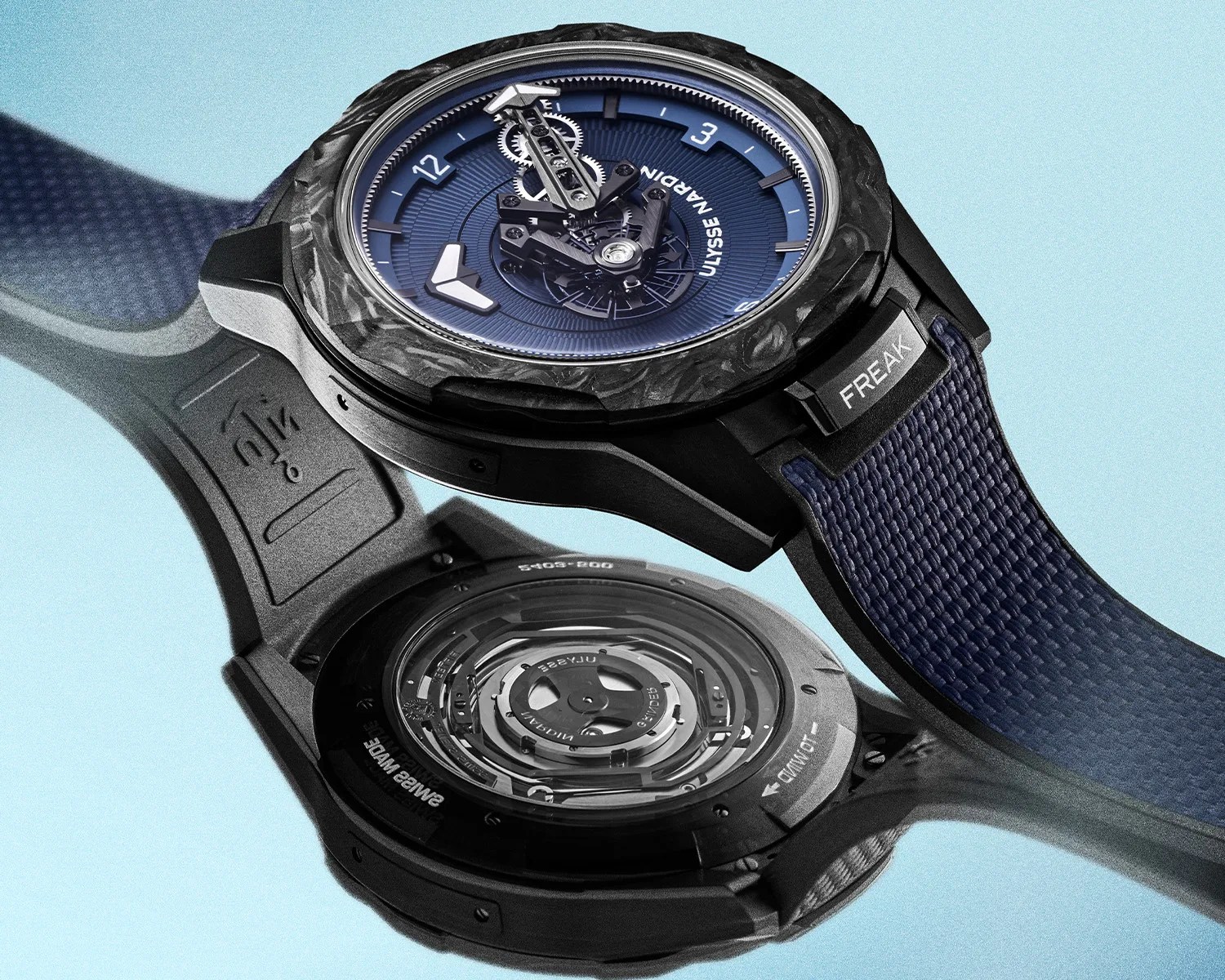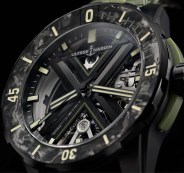Someone recently asked me what watch I considered to be the most important of the 21st century. While I’m not fully committed to one answer, the first watch that popped into my head was the Ulysse Nardin Freak.
First arriving in 2001, the original Freak lived up to its name with a wild design matched only by its unorthodox function. The watch featured no traditional hands, dial or crown. Instead, the movement itself told the time, with its flying carrousel acting as the minute hand and a rotating disc on the movement marking the hours. In place of a crown, the watch’s bezel was used to adjust the “hands,” while turning the caseback wound the watch.
As unique and revolutionary as the Freak’s appearance was, it was the watch’s inner workings that really left a lasting legacy. The original Freak was the first watch in history to use silicon parts in its escapement. The futuristic material is lightweight and hard, requires no lubrication, and is unaffected by temperature and magnetism.
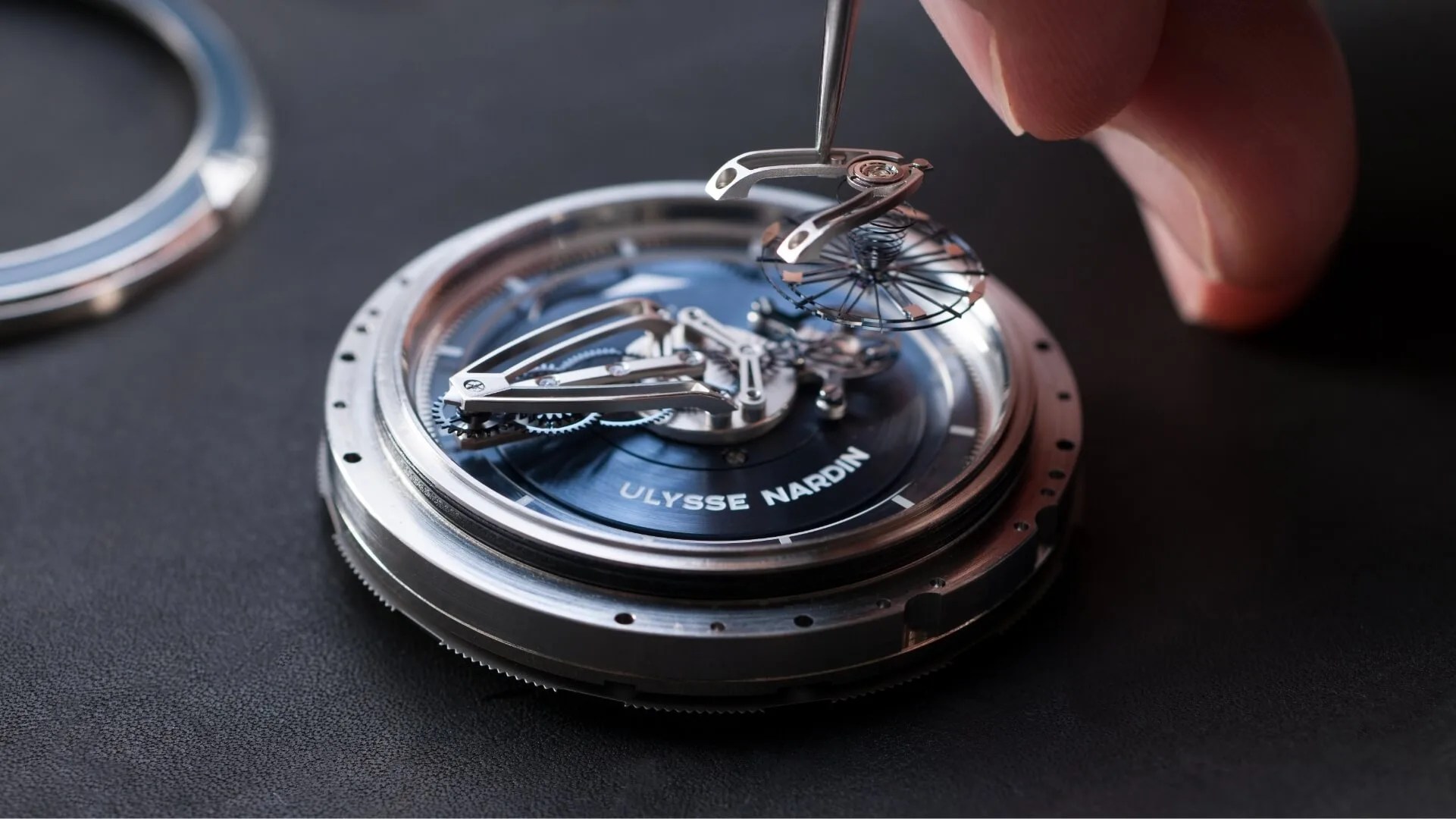
Silicon’s unique set of attributes make it ideal for use in fragile, easily upset mechanical movements, and the Freak showed that it was possible to use the material in a watch with the right technological knowhow. Since UN paved the way, silicon has become the gold standard for high-end watch escapements.
Omega uses silicon hairsprings and balance wheels in its Master Chronometer movements. Zenith uses a full silicon escapement in the modern iterations of its iconic El Primero movement. Rolex and Patek Philippe both now use proprietary silicon materials for their balance springs: “Syloxi” for Rolex and “Spiromax” for Patek. You get the picture.
Now, Ulysse Nardin has launched a new version of the Freak — the Freak One Navy Blue — and it just might be the most desirable take on the form yet.
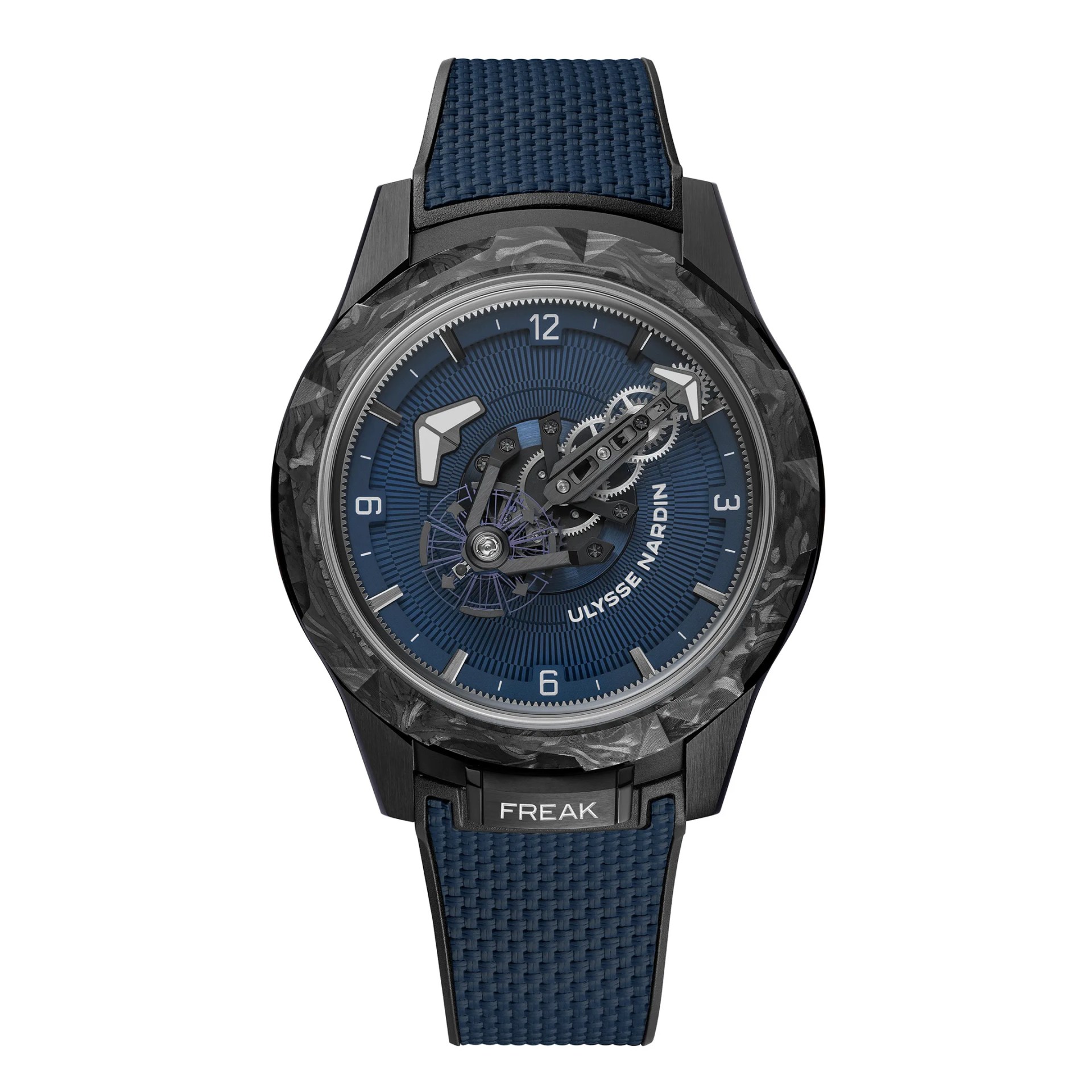 Ulysse Nardin
Ulysse NardinUlysse Nardin Freak One Navy Blue
Specs
| Case Size | 44mm |
| Movement | Ulysse Nardin Cal. UN-240 automatic flying carrousel |
| Water Resistance | 30m |
